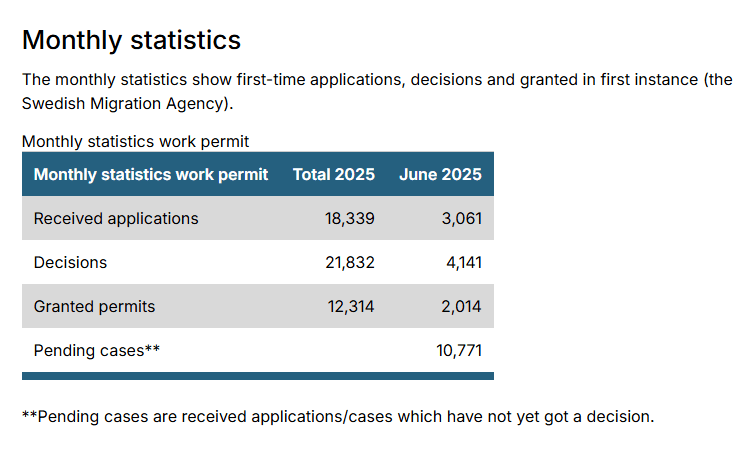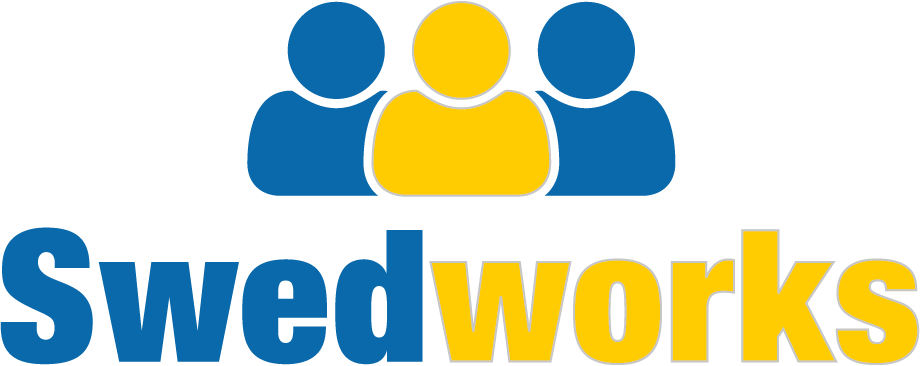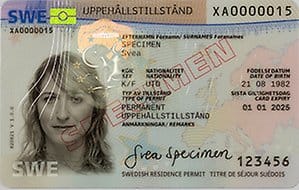5 Practical Tips For Employer Companies If You Are Applying For A Work Permit In Sweden By Yourself
What does a work permit really mean?
A promise to the Swedish Migration Agency
In short, a new application for a work permit can be described as a promise to the Migration Board about a number of things related to the employment relationship and labor legislation. So in fact, many of the requirements that seemingly are put on the applicant (the employee), are actually the responsibility of the employer company to meet and fulfill those requirements.
They look at whether it is reasonable for the promise to be fulfilled by the company. A new application is normally limited to two years. When you want to extend the work permit after two years, a retrospective review is made of whether you have fulfilled the promise and a prospective review of a renewed or updated promise.
If you are an employer company in Sweden and are about to apply for a work permit for a newly found employee from outside EU/EEA, we recommend you consider the matters in this post. The information is based on years of experience and over thousand of applications for work permit. We highlight the most important things to keep in mind before applying for a work permit in Sweden so you can prepare the application well and make sure the application is correct and complete.
The risks and pitfalls
An application for work permit in Sweden can go as smoothly as possible, but there is also a lot that can go wrong. According to the statistics from the Swedish Migration Agency, over 30% of all new work permit applications have been rejected since 2020.

Some rejections are due to things that would have been easy to avoid and easy to find information about, while other things are hidden in internal government documents and are rarely explained to you until you receive a rejection decision.
1 – Advertise before starting the application
Since 2008, it is the employer who decides who is most suitable for the job position to which the employment applies. Even if the employer decides who to hire, the position must be advertised in a way that reaches citizens in the EU/EEA. If a person changes jobs at a company or is already in Sweden, they may also need to advertise the position.
There is no law that dictates where it should be advertised, but it is up to the employer to prove that the advertisement reaches everyone in the EU/EEA. If you primarily use LinkedIn or another channel for advertising, but the most recognized portal by the Migration AGency is the Swedish Public Employment Service’s Job Bank (Arbetsförmedlingens Platsbanken). And we always recommend that you also place the job advertisement on that website to be on the safe side.
2 – Plan the start of employment
When you hire someone new, you want to know approximately when you will have access to your employee. It often becomes a little more complicated when a work and residence permit is involved! How long the processing takes depends on many different things. For example, which industry the company is active in, how many employees the company has, whether the application is complete, how big the Migration Board’s workload is and if there are any major holidays coming in between (Christmas/new year, Summer vacation season etc).
You can always look at the Migration Board’s approximate processing times on their website. They are based on statistics on the last three months’ cases. The times are constantly updated but rarely correspond well with reality, so it is recommended to consult someone with experience in the work permit process to get a rough estimate. It is also a good idea to allow a little extra time if the employee cannot travel visa-free to the EU/EEA.
3 – Time limit of the permit
A work permit is limited by two things: the length of the employment and the expiry date of the employee’s passport document. If the position is permanent, the work permit is always limited to two years (24 months) and if the position is a temporary position, it is instead limited to the duration of the temporary position. The work permit is also limited if a passport document is not valid for the entire desired permit period.
So for example, if you as the employer intend to employ someone permanently but the employee’s passport is valid for 18 months, then the work permit will be granted for only 18 months.
4 – Salary
The salary should be at a level similar to the collective agreement for the industry. In many industries, it is difficult to find guidance on what salary level you should aim for. You can then look at an industry cross-section instead.
Since 2024 there are salary threshold to follow (minimum salary amount). These figures change and it’s essential to keep track of these changes.
If your company has a collective agreement, follow it. The recommendation is, if you do not have a collective agreement, to contact a relevant trade union and ask for it or turn to Statistics Sweden for an average salary for the position.
5 – Insurance
In most cases, you need insurance that covers the employee for life, health and work-related accidents. In most industries, you should also sign a pension insurance. Some insurances only covers a certain type of employee, workers or white-collar workers, and if you have employees of both types, the insurance you already have in place may not be enough. For example, if you have a restaurant and insurance for chefs and waiters through the Hotel and Restaurant Union, you will probably need additional insurance for your IT manager who is employed on a work permit.
The recommendation is to contact your insurance company well in advance. If it is a group insurance, you should check whether both workers and white-collar workers are covered by the insurance. It may also be a good idea to check whether the insurance company has specific requirements, for example that the insured must have been registered in the Swedish population register for a certain period of time.
6 – Bonus tip: “Special industry” – economy
Certain industries have higher requirements in order to be allowed to employ people on a work permit. The list of these industries can be found on the Swedish Migration Board’s website. Here are the latest list as of July 2025 from the website of Migration Agency:
If your company belongs to one of these industries, you must be able to report how the company is able to guarantee pay for the person applying for a work permit. You must also be able to prove that the conditions exist for you to be able to pay their salary/wages for at least three months.
These rules apply to you if you employ employees within the following industries:
- Cleaning (81290, 81210)
- Hotel and restaurant (55101, 56)
- Construction (41200, 421, 42990, 43)
- Trade (471–478)
- Agriculture and forestry (0113, 012, 02102)
- Automotive workshop (452)
- Service (9602, 9604, 9609)
- Staffing (782)
- Personal assistance (88101, 88102)
The numbers in parentheses represent the first digits of current SNI codes. Your company’s SNI code can be found in your registration certificate from the Swedish Tax Agency.
One such requirement is that the company must be able to show that it has the finances to employ people. There is no law that determines exactly how this should be done. For example, you can show this by showing that the company generates a surplus on its balance sheet, that last year’s profit covers an additional salary, or that your company has customers waiting for their turn and that you need personnel to help those customers faster. But remember, only showing available funds in your company’s bank account is not enough.
It is the company that has the burden of proof and needs to show that it can afford to hire. Since the caseworker at the Swedish Migration Board only has limited insight into your company, it is important that you think about presenting your evidence in a way that is clear to the caseworker. What evidence is presented depends entirely on the company and possibly also the group to which the company belongs.
7 – Bonus tip: “Special industry” – sham employment
For those companies that are subject to higher requirements, the Swedish Migration Board also looks more for sham employment. A sham employment is an employment that is not based on merit, but rather is intended to “fix” a work and residence permit in Sweden. It can be difficult to refute accusations of sham employment, so it is always worth thinking a little about whether it could be an issue. If the Swedish Migration Board decides to investigate a case that they suspect as a sham employment, the employee will probably be called for an interview at a Swedish embassy, and the employer will probably be called to answer a few questions.
If the Swedish Migration Board calls when you are in a stressed situation, ask them to call you back in a more suitable time! There are far too many employers who answer questions during, for example, a lunch rush. The answers are rarely fair or clear and it is difficult to adjust the answers afterwards. It is also important to think about what things may seem a little strange about the employment. For example, how the person you want to hire found out about the job or, in certain professions, how communication is handled between the employee and colleagues or customers (if the employee does not speak Swedish or English). Just as in the section above, it is important to think about it based on what the case officer might raise or react to.
How can we help?
Do you feel that you would rather spend your time on other things in your business and at the same time minimize the risk of mistakes in the application process? Then you are welcome to contact us at Swedworks Global.
We at Swedworks Global offer a comprehensive service for handling work permit applications for Sweden on behalf of both the employer and the employee. The service covers everything mentioned above plus more.
We have a proven record with more than 15 years experience in the field of Swedish work permit application processing and with thousands applications of various characters and complexity.
Get in touch for a for a no-obligation consultation. Free of charge and no strings attached.




